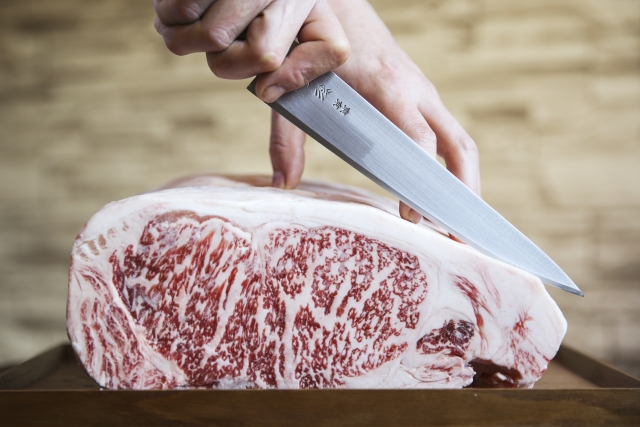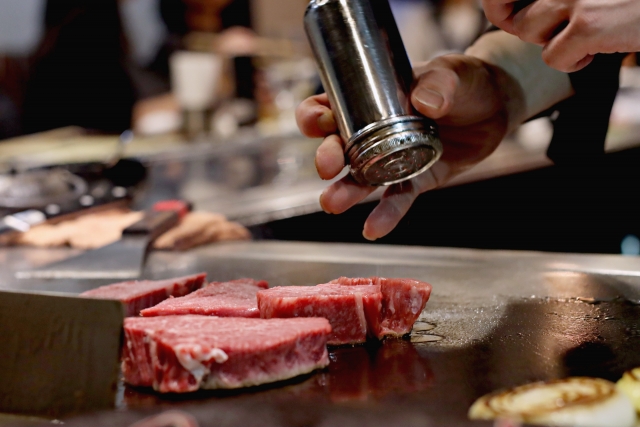Picture this: You've just landed in Tokyo. As you make your way through neon-lit streets, one craving dominates your thoughts—authentic, melt-in-your-mouth Wagyu. You’ve heard the legends—Kobe, Matsusaka, Omi—but which one will you fall in love with? You’ve heard the names—Kobe, Matsusaka, Omi—but what really sets them apart? And which one is right for your taste buds? One term that frequently comes up in that search is “The Three Great Wagyu.”
You may have heard names like Kobe Beef, Matsusaka Beef, or Omi Beef, but how many people truly understand the differences and unique appeal of each one? Probably not as many as you’d think.
In this article, we’ll walk you through the definitions and backgrounds of the Three Great Wagyu brands, explain their distinct features, and even share tips on how to best enjoy them. It's a perfect pre-trip read—your gourmet prep before diving into Japan’s Wagyu scene!

Table of Contents
- What Are the Three Great Wagyu?|Basic Knowledge of Kobe, Matsusaka, and Omi
- What Makes Each Wagyu Brand So Irresistible?
- How to Taste Wagyu Like a Gourmet Insider
- Find Restaurants Serving the Three Great Wagyu
What Are the Three Great Wagyu?|Basic Knowledge of Kobe, Matsusaka, and Omi
The Three Great Wagyu refers to Japan’s most renowned Wagyu beef brands: Kobe Beef, Matsusaka Beef, and Omi Beef. Each is highly rated for its history, quality, and popularity both within Japan and internationally, often considered a “bucket list” culinary experience for travelers.
To begin, “Wagyu” refers to beef from specific Japanese cattle breeds, such as the Japanese Black. Known for its fine marbling and melt-in-your-mouth tenderness, only Wagyu that meets strict criteria and is raised in designated regions can earn the prestigious “branded Wagyu” label.
The Three Great Wagyu are especially valued for the following reasons:
- Historical Significance: Each brand has over 400 years of history and helped establish Japan’s beef culture.
- Bloodline & Careful Rearing: These cattle come from distinguished bloodlines and are raised with utmost care, in stress-free environments.
- Rarity & Premium Status: Limited in supply, these Wagyu types offer a rare and luxurious dining experience.
Although the term “Three Great Wagyu” is not officially designated by the Japanese government, it is widely recognized in media and culinary circles. The debate over which brand is “best” is subjective—it’s far more rewarding to explore their individual qualities and discover your personal favorite.
In the next section, we’ll dive deeper into each of these world-class Wagyu brands.
What Makes Each Wagyu Brand So Irresistible?
Kobe Beef: The Global Symbol of Wagyu Excellence
Kobe Beef comes from Tajima cattle raised in Hyogo Prefecture and must meet stringent criteria to earn its title. Its signature characteristics include delicate, artistic marbling and a refined sweetness that melts in your mouth.
Chefs and gourmets around the world praise Kobe Beef for its luxurious texture and clean flavor. Outside Japan, the word “Wagyu” is often synonymous with Kobe Beef, making it a global icon of Japanese beef culture. It is only served at certified restaurants in Hyogo, ensuring strict quality control.
Matsusaka Beef: A Melt-in-Your-Mouth Masterpiece
Matsusaka Beef is made from virgin female Japanese Black cattle raised in the Matsusaka region of Mie Prefecture. It is famous for its beautiful marbling and rich, deep umami flavor.
Cattle are often pampered with massages and even fed beer, leading to its nickname, “Queen of Beef.” While excellent in any style—grilled, sukiyaki, or steak—it’s especially praised for sukiyaki, where its sweetness and umami shine.
Omi Beef: Japan’s Oldest Wagyu Brand from Shiga
Omi Beef comes from Japanese Black cattle raised in Shiga Prefecture and is the oldest Wagyu brand in Japan, with over 400 years of history. It was even served to shoguns during the Edo Period.
This beef stands out for its light, clean fat, gentle sweetness, and rich meat flavor. Its low melting point gives it a buttery texture that melts even at body temperature. Raised in the tranquil environment near Lake Biwa, the cattle experience less stress, resulting in exceptional meat quality.
Each of the Three Great Wagyu offers distinct “flavor,” “aroma,” and “texture.” It’s truly difficult to rank one above the others. In the next section, we’ll share how to enjoy tasting them and appreciating their differences.
How to Taste Wagyu Like a Gourmet Insider
To fully enjoy the Three Great Wagyu, it's important to taste them while keeping their differences in mind. Here are some tips to make your culinary journey unforgettable:
- Feel the Difference: Rich, Light, or Luxurious?
Kobe has melt-in-your-mouth marbling, Matsusaka boasts rich, flavorful fat, and Omi features a lighter, elegant profile.
Choosing a tasting course that lets you sample multiple Wagyu brands side by side is a great way to explore these subtle contrasts.
Pay Attention to Cooking Methods
Steak brings out the bold character of Kobe Beef. Sukiyaki enhances the sweet, fatty richness of Matsusaka. Shabu-shabu complements the delicate aroma and texture of Omi.
Trying different preparation methods lets you experience their full range.
- Compare Cuts of Meat
Fatty cuts like ribeye or sirloin differ greatly from leaner cuts like rump or tenderloin, even within the same brand. If you're not fond of rich fat, lean cuts are a great option.
Some restaurants offer tasting menus with various cuts—don’t miss the chance to try them!
- Match with Season and Region
Try Omi Beef hot pot in winter, a fresh Kobe steak in spring, or a light Matsusaka tataki in summer. Tasting Wagyu with Japan’s seasons makes the experience even more special.
Make the most of your trip to Japan by truly savoring the differences in these luxury beef brands.
In Conclusion: The Charms of the Three Great Wagyu Before You Travel
Kobe, Matsusaka, and Omi—each of the Three Great Wagyu has its own rich history, distinct rearing methods, and unique flavors. Instead of choosing based on popularity alone, understanding their differences can lead to a deeper and more meaningful gourmet experience.
You don’t have to break the bank to indulge in Japan’s top-tier Wagyu. With tourist-friendly tasting menus and English-friendly restaurants across the country, that unforgettable Wagyu moment—the kind you’ll talk about for years—is closer than you think. Find a restaurant, make a reservation, and let your taste buds lead the way through Japan’s most legendary flavors.
If you're not sure where to dine, use the search button below to find restaurants offering these premium Wagyu experiences. Many support English, making it easy to plan ahead for your trip.
🔍 Find Restaurants Serving the Three Great Wagyu
👉 Tap the Wagyu Search Button Now




